By: XEONIQ [ Instagram | Tumblr ]
Contents
- Introduction
- On Self-Control, Motivation and the Argument for Calisthenics
- The Routines
- Tips for Individual Exercises
1. Introduction
Calisthenics are exercises that use our own body weight as resistance to improve strength and muscle growth. With consistent lockdowns ongoing and projected for the near future throughout the world, which has included gym closures in many areas, I felt it would be useful for those affected to have a gym-free routine available that they could consult to practice personal fitness.
If you want to skip right to the routines, click the link in the Contents list above. The following section has to do with motivation and ideology. The Shell Zine Outdoor Calisthenics guide has been prepared in three tiers from beginning to intermediate to advanced. I’ve provided them in JPEGs that you can simply save to your phone to consult when needed.
2. On Self-Control, Motivation and the Argument for Calisthenics
Being active within our world is a fundamental condition of humanity. As technology continues to permeate every aspect of our lives, I think it is important that we adjust our lifestyles to include time to physically interact with and challenge ourselves against our tangible environments. Calisthenics can be done by almost anyone to stimulate your musculoskeletal system and maintain our long-term health, posture and strength.
There is no such thing as an ideal or universally superior fitness regiment that will work perfectly for all people. The best exercise programme is one that you practice regularly, that you enjoy doing and that is sustainable. Sports, cycling, yoga, rock climbing, martial arts, and any other physical pursuits can all be great ways to keep fit for your life. But like this guide, they all require that you are willing and able to do them consistently week in and week out. That requires you to keep motivated and to practice self control.
Now there may be very few things you have direct control of in this world. The way your efforts are rewarded in work or study are determined not just by your behaviour, but the judgement and perceptions of others. Most of us have had our lives impacted in one way or another by the COVID-19 pandemic, taking away access to our favourite places and restricting numerous activities. In general, and especially this year, it can feel like we have little to no power at all over our own lives. But there are a few things that are still 100% determined by us. That is the food we put in our mouths, the media that we consume, the products we buy, and our physicality. This leads me to one of my favourite quotes:
Every facet, every department of your mind, is to be programmed by you. And unless you assume your rightful responsibility, and begin to program your own mind, the world will program it for you.
Jack Kornfield
I strongly believe that when it comes to mental and physical hygiene we have the utmost responsibility to take care of ourselves, because if we allow the world to exercise its will upon us, we will assuredly become very weak, very unhealthy and be locked in a continual state of insecurity and rampant consumerism.
While I don’t feel that calisthenics build muscle or are as safe as a good gym programme, they very well may be ideal for a lot of people who are restricted from going to the gym, find the costs of a gym membership prohibitive or who just simply prefer to train outside. And that leads me to the strongest argument that I have for practicing calisthenics: there is no excuse that one could have for not starting training right this second. There are no gym opening hours, no joining fees, you don’t need to buy a fitness tracker or some sportswear product from Nike. You can simply just go outside, right now, at any time of the day or night, and start exercising. It is all on you.
If you are unhappy with how you look, how strong you are, or if you just simply don’t “feel good” and you aren’t involved in any kind of exercise currently, then perhaps now is the perfect time to start training. If the information in this guide doesn’t register with you, there are with no exaggeration hundreds of thousands of other guides in all mediums that can answer any question you have regarding calisthenics training. All that matters is you put in the time and the hard work, day in and day out.
3. The Routines
Three tiers of routines are presented in the tables below. You may find starting out that certain exercises in the beginner routine are too easy and do not tax you significantly. If so, simply swap that exercise to the more difficult one in the intermediate or advanced tables.
Rather than doing a “split” like I detailed in my Gym routine, I recommend a whole body workout for calisthenics. The fundamental principle behind the exercises are still the same: provide resistance to targeted muscle groups over and over to increase blood flow to those muscles and over time stimulate new muscle fibres, increasing your strength and size.
I have arranged the exercises in a particular order to stress your muscles in stages to maximise your potential for hypertrophy (muscle growth). Dips for example are more difficult than push ups, and are done first, with push ups serving to get an additional “pump” (increased blood flow) to the targeted muscles in that exercise afterwards.
- You will need access to parallel bars, a pull-up bar, or ideally “monkey” bars to do all of the exercises in these routines.
- I would also recommend supplementing this routine with regular cardio, ideally every day, in the form of running, cycling or swimming, with the latter two alternatives less abrasive to your joints and therefore more sustainable long term.
- If you would like general diet and nutrition advice, check out the Shell Zine Gym Guide
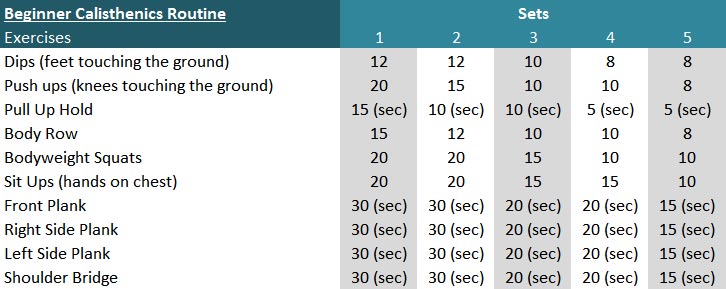
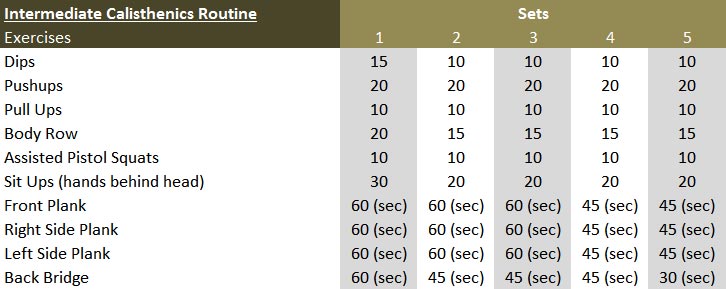
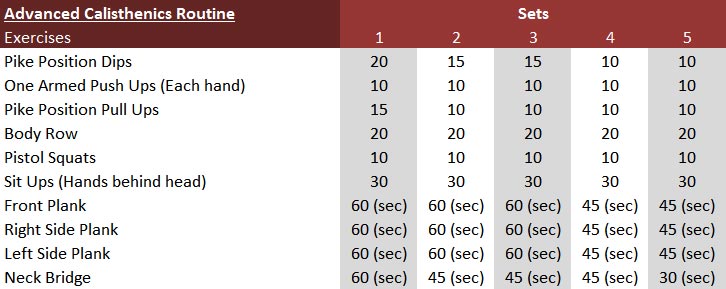
Precaution
Start out slow, on the easier side if you are confident with any of these exercises. You can seriously injure yourself from a fall or sprain your joints. Injury from accidents or just repetitive stress damage to your tendons and ligaments are common with calisthenics. It is the reason why I recommend gym training for beginners (Shell Zine Guide).
If you have not trained before you WILL be incredibly sore for a few days after attempting this routine. Listen to your body and avoid pain, adjusting your movements for comfort. Keep consistent however and you will rapidly adjust to the movements and within 12 weeks should be significantly stronger than you were before if you were untrained.
4. Tips for Individual Exercises
I’ve gone through the muscle groups trained by each exercise and provided a few tips. Each exercise has been demonstrated by Tesselvte (Instagram).
Dips
Dips primarily train your triceps, shoulders, chest, and rhomboids (inner back). Looking straight ahead will put more load on your triceps, looking downwards will train your chest muscles more. You will need a set of parallel bars, commonly found in parks or playgrounds.
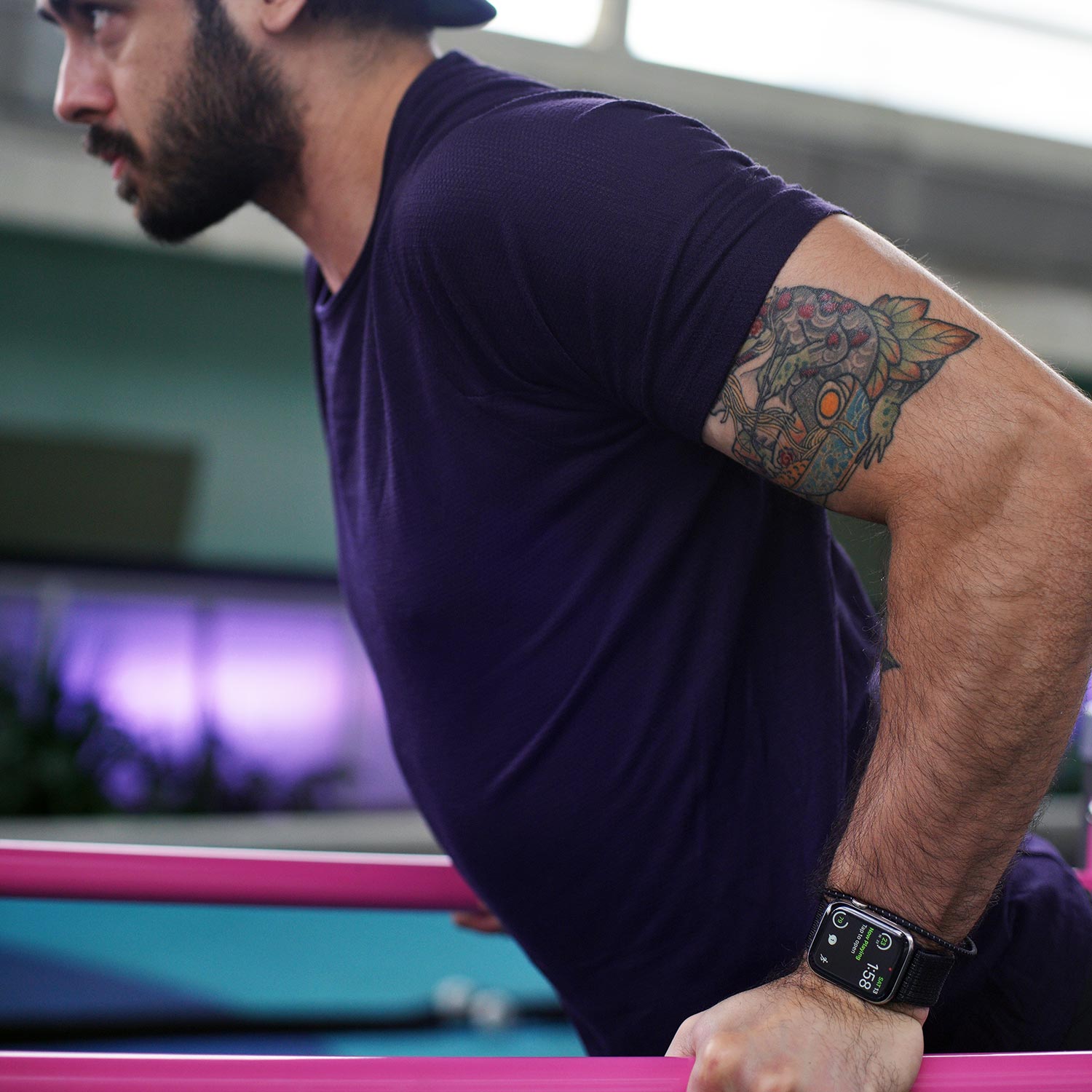
If a normal dip is too difficult to do one rep you can leave one of your toes on the ground to assist you up. At the advanced level, pike position dips will train your abdominal muscles and quadriceps.
Pushups
Pushups primarily train your triceps, shoulders and chest. Adjust the angle of your hands to a comfortable position. I personally rotate my hands 45 degrees inward for the best movement for my body. You can also elevate your legs on a bench or similar to put more load on your upper chest and shoulders.
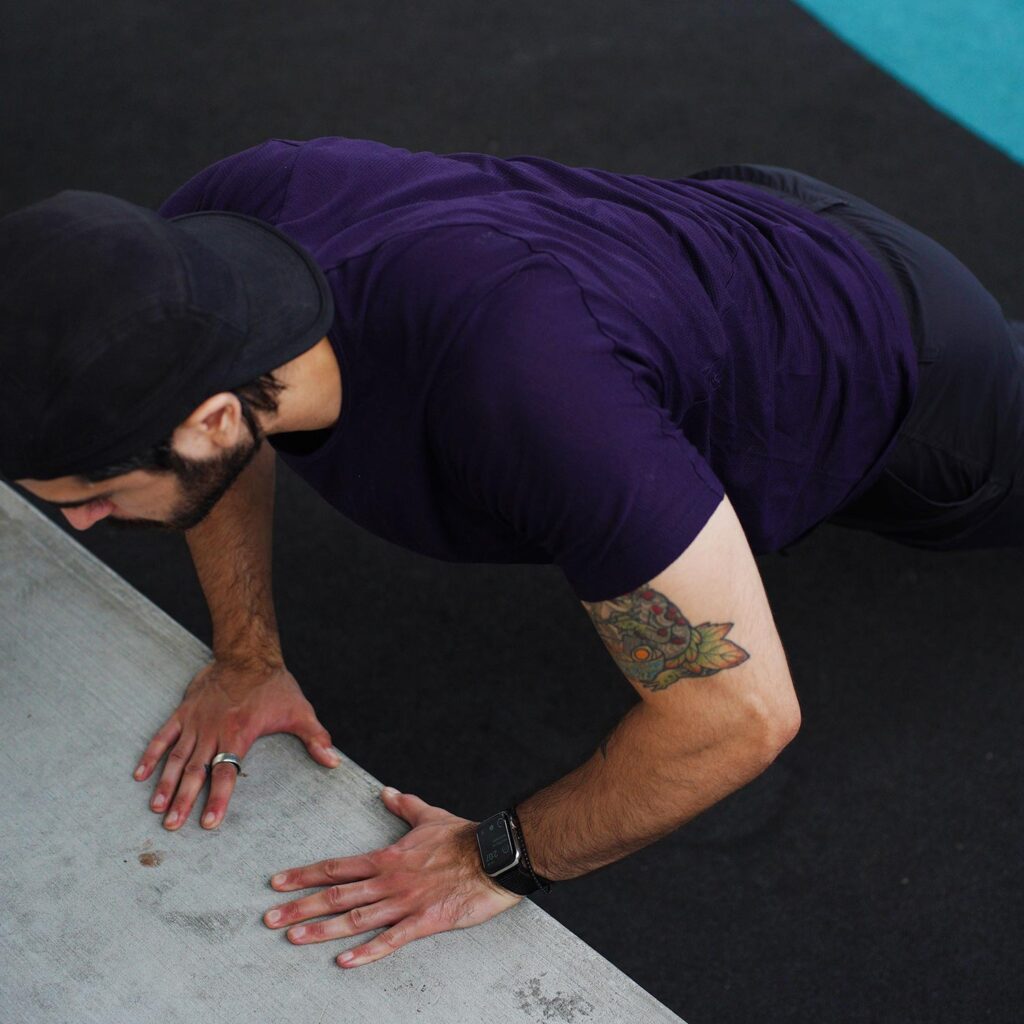
If a normal push up is too difficult, you can place your knees on the ground. At an advanced level you may do the push ups with just one hand.
Pull Ups (and Holds)
Pull ups primarily train your lats, rhomboids (inner back), biceps, traps, and brachialis muscles. I recommend doing these with a neutral grip, which you’d be able to do on a set of monkey bars, and if those aren’t available, as a chin up with your palms facing towards you. Both of these will put less pressure on your tendons and more on your bicep muscle. Reducing tendon and ligament strain is very important if you will be training using calisthenics in the long term.

If a normal pull up is too difficult, you can simply jump up to into the top of the pull up position and hold it as long as possible. This will allow you to eventually start doing pull ups from a dead hang. At an advanced level, pike position pull ups will also train the abdominal muscles and quadriceps.
Body Rows
Body rows train your biceps, triceps and back muscles. These can be done with rings or a low positioned bar.
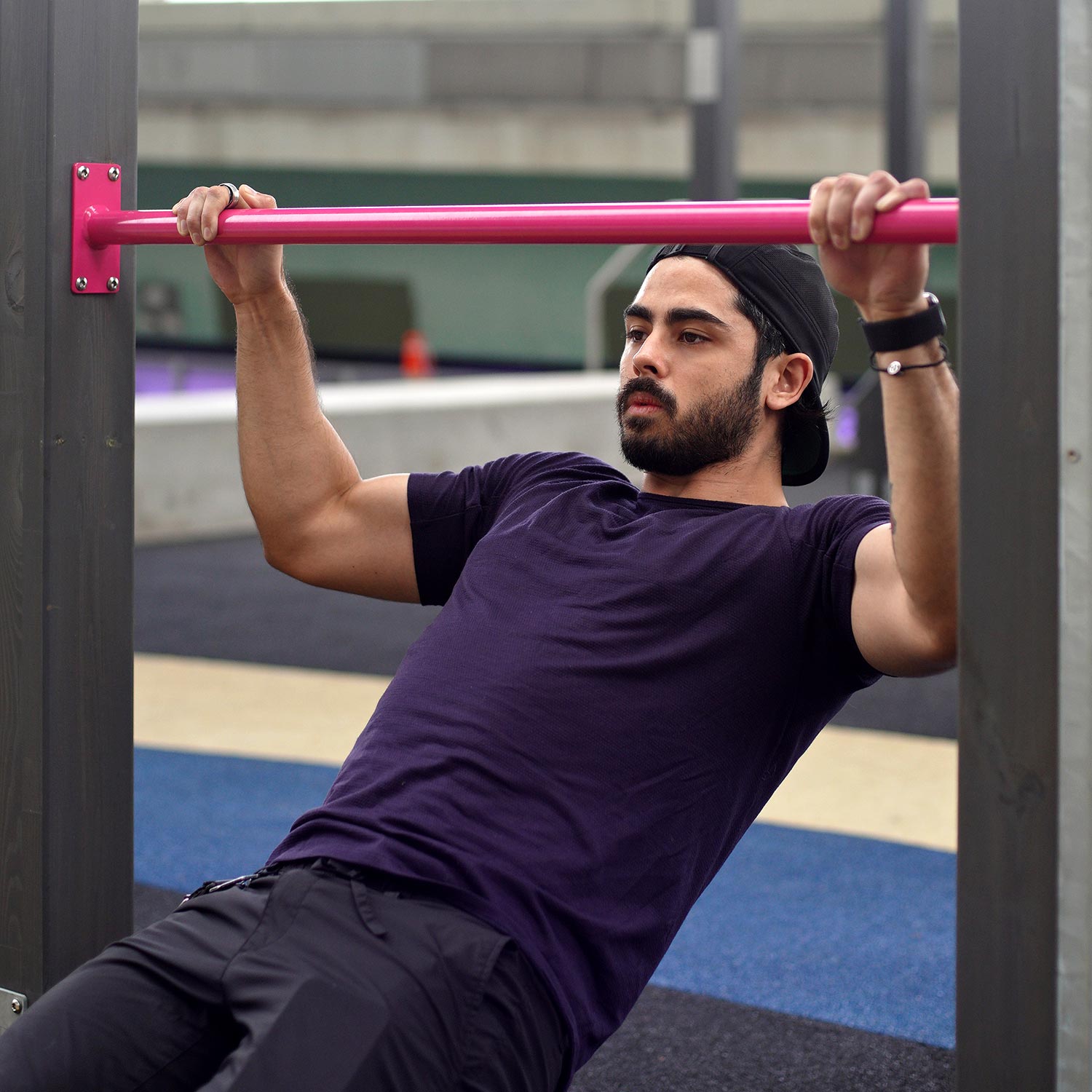
These are easier to do than pull ups as your feet are on the ground and serve to increase the blood flow to your back and arm muscles as a follow up exercise to the pull ups.
Squats
Bodyweight squats primarily train your glutes, quadriceps, hamstrings, calves, and abdominal muscles.
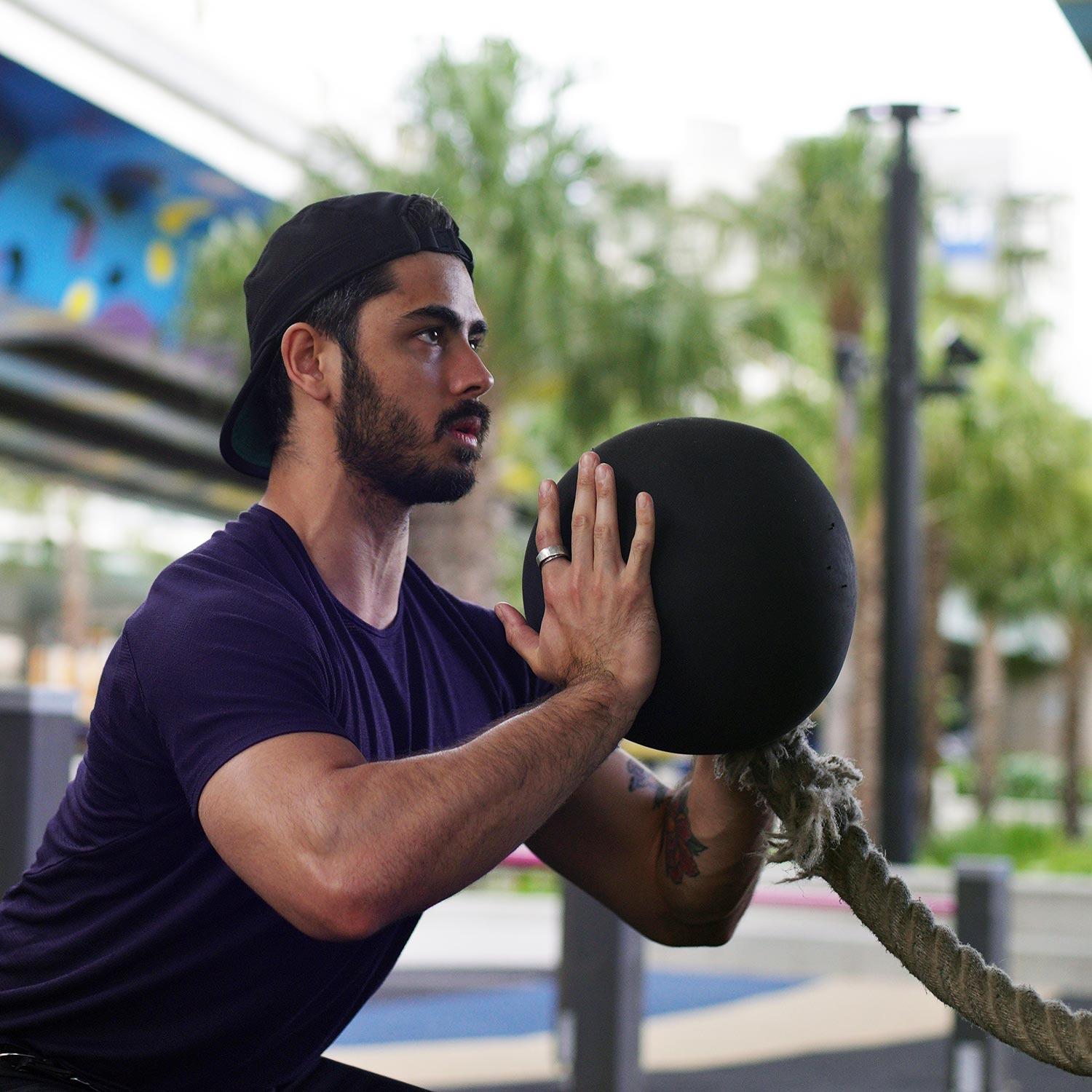
Once you can easily do 5 sets of 20 of these you can move on to doing assisted pistol squats (one legged squats), where you keep just one toe on the ground to assist the main leg.
Sit Ups
Sit ups primarily train your abdominal muscles, hip flexors, chest, and neck.

Placing your hands behind your head makes them slightly more difficult than crossing them over your chest.
Planks
Planks primarily train your abdominal muscles, your back, arms, glutes, and your legs. There are three types of planks in this calisthenics guide, each putting different loads on your torso and arms.
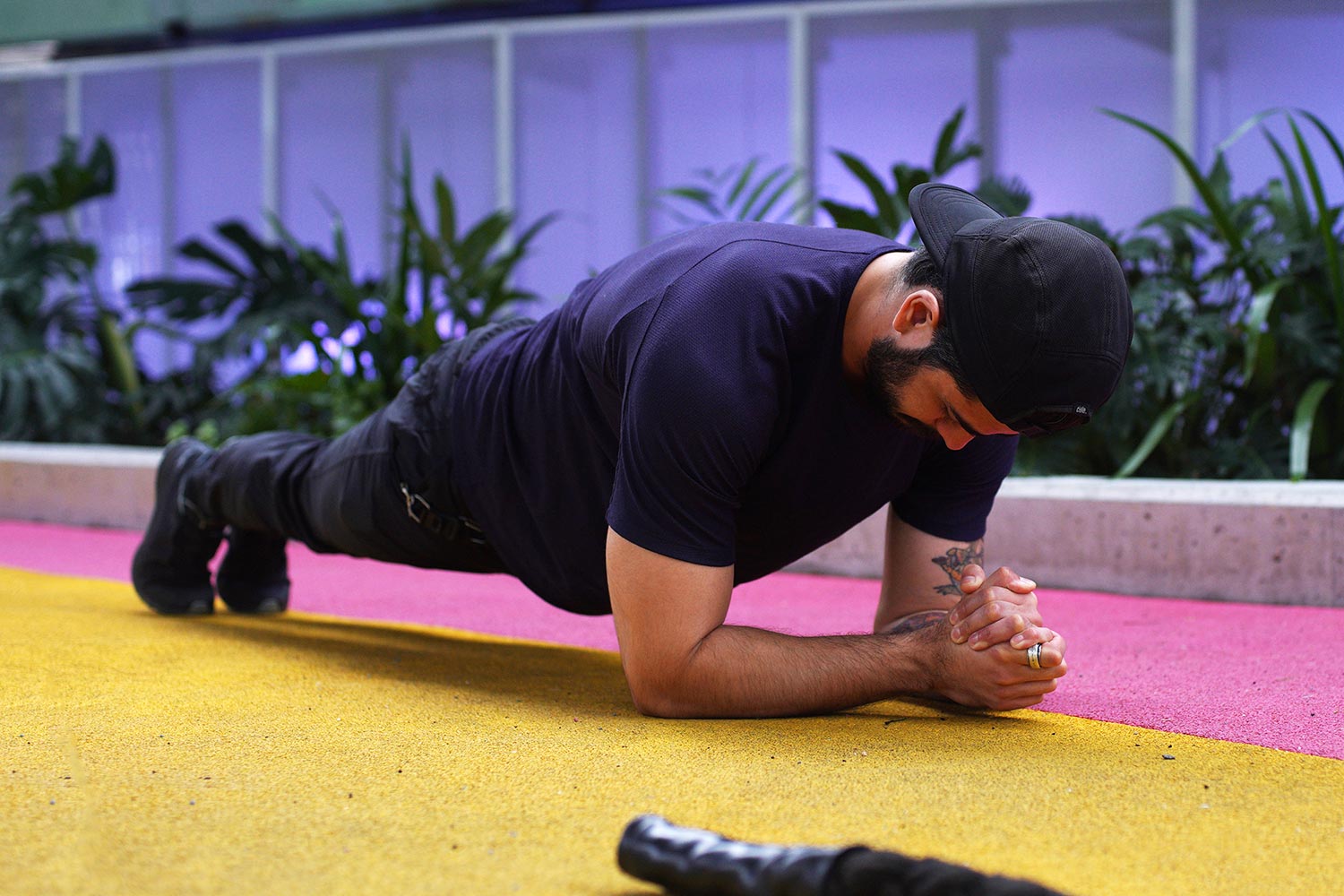
If normal planks are too difficult to do, you can try them first with your knees on the ground until you are strong enough to do them unassisted.
Bridges
Bridges primarily train your spinal erectors, glutes, hamstrings, deltoids, and other muscles in your back, arms and legs.
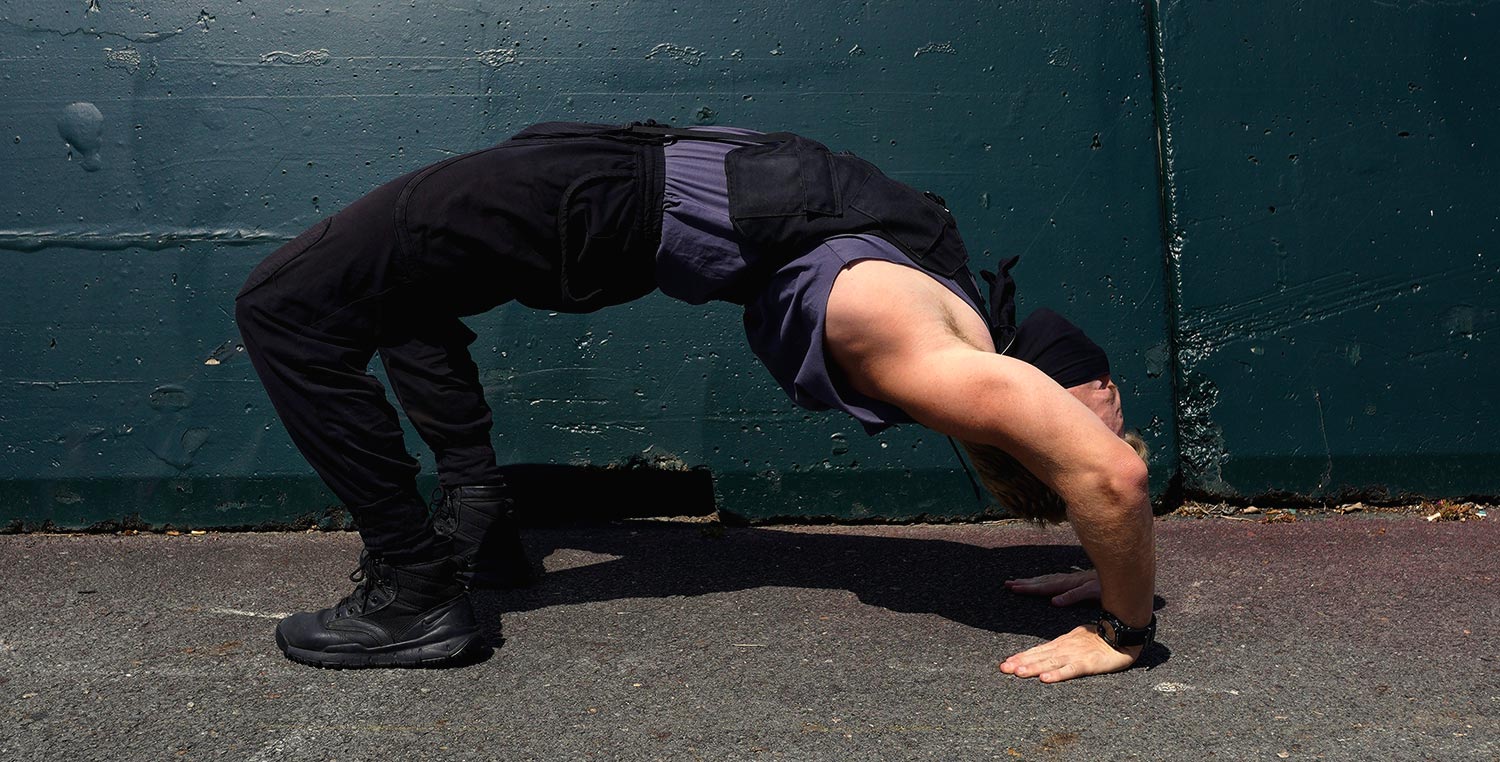
You can work your way up from a simple shoulder bridge, to back bridges (on your hands) and finally neck bridges.
If you enjoyed this article, supporting SHELLZINE by any amount can be made via the link below. Your contribution is completely optional and all funds help cover the website’s growing hosting costs and enable further original content creation without the use of advertisements. Secure payments by all major card types, including Google Pay and Apple Pay, are supported.

